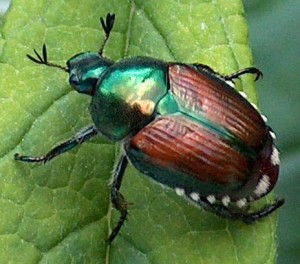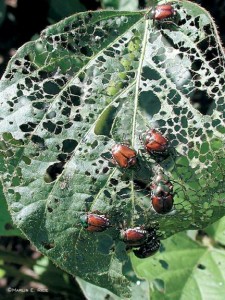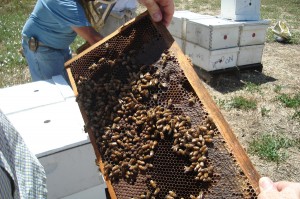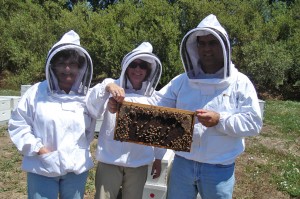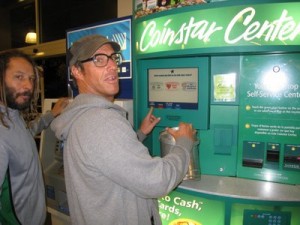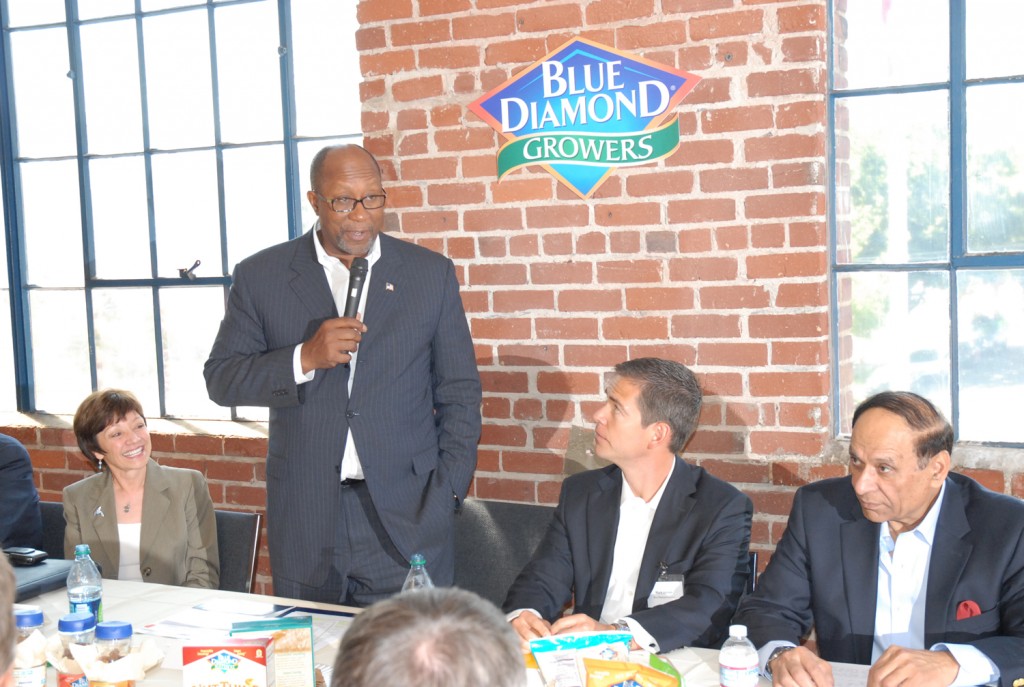http://www.usda.gov/wps/portal/usda/usdahome?contentid=2011/08/0373.xml&navid=NEWS_RELEASE&navtype=RT&parentnav=LATEST_RELEASES&edeployment_action=retrievecontent
Agriculture Secretary Tom Vilsack today announced the winning proposals for the 2011 Conservation Innovation Grants (CIG). Through CIG, the USDA’s Natural Resources Conservation Service (NRCS) is investing nearly $22.5 million in innovative conservation technologies and approaches that address a broad array of existing and emerging natural resource issues.
“We’re announcing more than 52 grants today—these are 52 opportunities to help some of America’s top agricultural and conservation institutions, foundations and businesses develop unique approaches to enhancing and protecting natural resources on agricultural lands,” said Vilsack. “The grants will help to spur creativity and problem solving to benefit conservation-minded farmers and ranchers. Everyone who relies upon the sustainability of our nation’s natural resources for clean water, food and fiber, or their way of life, will benefit from these grants.”
Besides advancing innovations that address erosion prevention and other natural resource issues, the 2011 CIG award winners will demonstrate the effectiveness of new ways to reduce odors from poultry and livestock operations, reclaim mining lands, develop ecosystem markets and expand solar energy use on farms. Grant winners pay 50 percent of project costs.
Projects will be carried out in 40 states. Eight of the approved grants support development of conservation innovations in the Chesapeake Bay Watershed, and another eight focus on the Mississippi River Basin.
A summary of all proposals selected for a 2011 Conservation Innovation Grant is available at www.nrcs.usda.gov . Some examples include:
California – $372,478 to the Mokelumne Watershed Environmental Benefits Program to establish a regional ecosystem market that invests in improving water availability, water quality, habitat viability and carbon sequestration, and measures its benefits.
Delaware, Maryland, Pennsylvania, Virginia and West Virginia – $848,424 to the National Fish and Wildlife Foundation to help farmers convert manure to energy to generate income and improve water quality in the Chesapeake Bay.
Florida – $581,625 to the New North Florida Cooperative Association, Inc., to develop and demonstrate conservation approaches and technologies that can be easily and inexpensively adopted by limited-resource, socially disadvantaged and beginning farmers.
Georgia – $122,712 to the University of Georgia to demonstrate the effectiveness of solar energy in cooling, heating, and pumping water, and for drip irrigation, aerating ponds, and watering livestock.
Iowa, Illinois and Indiana – $195,623 to the Agricultural Drainage Management Coalition to develop and demonstrate ways to retrofit existing conservation buffers to better prevent nutrients from entering waterways from field drainage systems.
Kentucky, Ohio, Pennsylvania, Virginia and West Virginia – $541,136 to The American Chestnut Foundation to demonstrate the use of chestnut trees and other hardwoods to reclaim land on mining sites.
Maryland – $73,500 to the Maryland Association of Soil Conservation Districts for conservation outreach to non-English-speaking poultry producers.
Massachusetts and Rhode Island – $60,954 to Walrus and Carpenter Oysters to turn nuisance macroalgae that harms oyster production into fertilizer.
Ohio – $1 million to the Quasar Energy Group, LLC, to demonstrate the effectiveness of anaerobic digesters to process and manage livestock waste in the Grand Lake St. Mary’s watershed, and to prevent livestock nutrients from entering the Mississippi River.
Oregon – $966,722 to the Freshwater Trust to demonstrate, through on-the-ground projects and transactions of verified and registered credits, a functional market system that uses proven tools and methodologies.
South Dakota – $859,671 to South Dakota State University to demonstrate the effectiveness of how mob grazing of cattle impacts the productivity and profitability of grazing land, plant species, and soil and water quality. In mob grazing, cows are restricted to grazing in a small area for a short period of time.
Washington – $410,491 to Washington State University to demonstrate the effectiveness of conservation practices for mitigating air emissions from dairy operations.
Wisconsin – $700,000 to the University of Wisconsin to demonstrate the effectiveness of how to preserve water resources in the state.
The NRCS administers CIG as part of the Environmental Quality Incentives Program. Grants are awarded to state and local governments, federally recognized Indian tribes, non-governmental organizations and individuals. NRCS uses CIG to invest in innovative, on-the-ground conservation technologies and approaches with the goal of wide-scale adoption to address water quality and quantity, air quality, energy conservation, and environmental markets, among other natural resource issues.
For more information about NRCS conservation programs online, visit: http://www.nrcs.usda.gov or visit the nearest USDA Service Center in your area.
#



